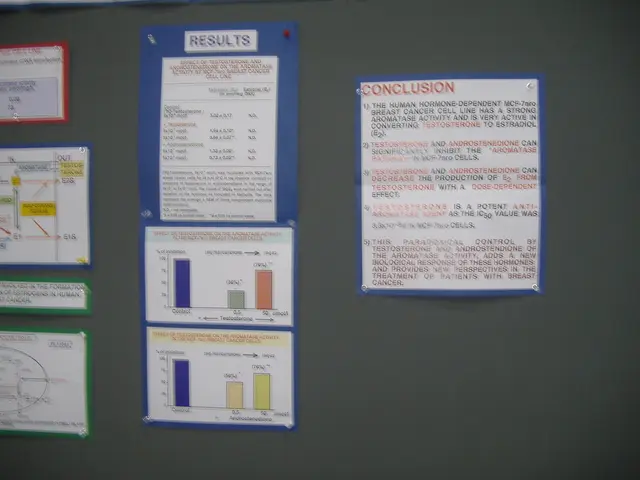Life-Saving Devices: Pacemakers and Defibrillators Differ in Function
In the world of cardiology, two crucial medical devices—pacemakers and implantable cardioverter defibrillators (ICDs)—play a vital role in treating heart conditions that disrupt the heart's natural electrical activity.
Pacemakers
Pacemakers are implantable devices primarily used to manage symptomatic slow heart rhythms. Indications for pacemaker implantation include symptomatic bradycardia (slow heart rate), such as sinus bradycardia and third-degree atrioventricular (AV) block, chronic heart failure or heart disease with episodes of syncope (fainting), carotid sinus syndrome causing fainting episodes, and in urgent cases for life-threatening arrhythmias to stabilise patients before permanent pacemaker insertion.
The benefits of pacemakers are manifold. They regulate abnormal heart rhythms by sending electrical pulses to maintain a normal heartbeat, improving symptoms related to slow heart rates like fatigue, dizziness, or syncope. Moreover, they support heart function in chronic conditions where natural pacing is compromised.
However, pacemakers are not without risks. Procedural complications such as pneumothorax, hemothorax, cardiac perforation, tamponade, or lead displacement can occur. Infection at the insertion site, development of dangerous arrhythmias, risks related to device malfunction, battery depletion, or sensing/pacing issues, postoperative pain, and restriction of arm movement immediately following implantation are other potential risks.
Implantable Cardioverter Defibrillators (ICDs) and Cardiac Resynchronization Therapy (CRT)
ICDs are designed to prevent sudden cardiac arrest, a potentially life-threatening event, in high-risk patients. These include those with prior heart attacks, congenital heart defects, Long QT syndrome, or ventricular dysrhythmias.
On the other hand, CRT is a form of biventricular pacing often combined with ICDs. It is used to improve synchronization of ventricular contractions in patients with heart failure and ventricular conduction delays that impair coordinated heart pumping. CRT is particularly beneficial for patients with low ejection fraction and heart failure symptoms.
The benefits of CRT devices are twofold. They improve heart pumping efficiency by synchronizing ventricular contractions, which can improve symptoms and reduce hospitalizations for heart failure. Moreover, CRT responders often show improved left ventricular ejection fraction (LVEF) and quality of life.
However, like pacemakers, ICDs and CRT devices carry risks. These include potential induction of ventricular arrhythmias by CRT leads or pacing, especially in the early post-implantation period, mechanical complications such as lead dislodgement, scarring, or local remodeling inducing arrhythmias, procedural risks similar to pacemaker insertion, device-specific complications, and the fact that not all patients respond to CRT (20-30% non-responders).
In summary, pacemakers are primarily used to manage symptomatic slow heart rhythms, while ICDs prevent sudden death from malignant arrhythmias, and CRT devices improve heart function in heart failure by resynchronizing ventricular contractions. Each device offers substantial benefits for properly selected patients but carries procedure-related and device-associated risks that need careful evaluation and monitoring.
[1] Cleveland Clinic. (2021). Pacemakers. Retrieved from https://my.clevelandclinic.org/health/treatments/16695-pacemaker
[2] Cleveland Clinic. (2021). Implantable Cardioverter Defibrillator (ICD). Retrieved from https://my.clevelandclinic.org/health/treatments/15994-implantable-cardioverter-defibrillator-icd
[3] Cleveland Clinic. (2021). Cardiac Resynchronization Therapy (CRT). Retrieved from https://my.clevelandclinic.org/health/treatments/15995-cardiac-resynchronization-therapy-crt
[4] American Heart Association. (2021). What Is Cardiac Resynchronization Therapy (CRT)? Retrieved from https://www.heart.org/en/health-topics/heart-failure/treatment-and-management-of-heart-failure/what-is-cardiac-resynchronization-therapy-crt
[5] Mayo Clinic. (2021). Cardiac resynchronization therapy (CRT). Retrieved from https://www.mayoclinic.org/tests-procedures/cardiac-resynchronization-therapy/about/pac-20385500
Read also:
- Trump's SNAP reductions and New York City Council's grocery delivery legislation: Problems for city residents highlighted
- Reducing dental expenses for elderlies in Sweden: Over 50% cut in charges for pensioners by the government
- Forty-year-old diet: A list of meal choices to savor
- Exiled Life's Conundrum: A Blend of Liberation, Disillusionment, and Distress







